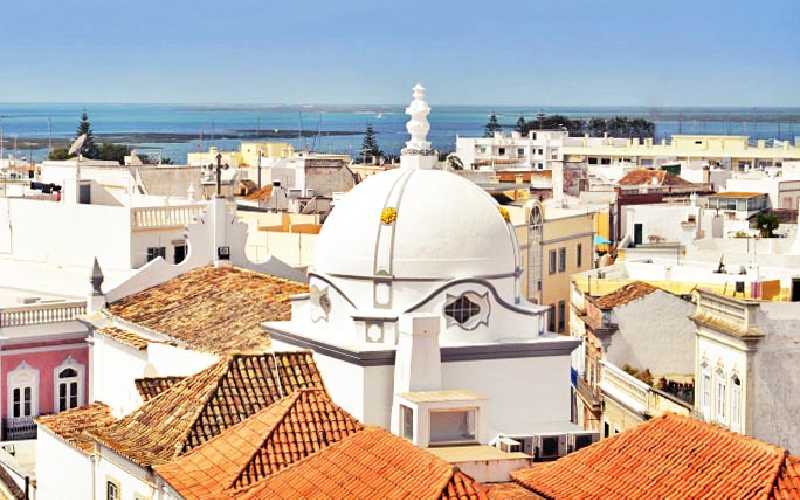This article contains a guide to Olhao, including city tours and details of the main tourist attractions. Olhao has a number of unique tourist attractions and the atmosphere in the city is very different from the major holiday resorts in the Algarve.
Getting to Olhao
For your day trip, it is easy to travel to Olhao as it is served by the Algarve regional train.
If you visit the Eastern Algarve on the coast, buses come from both Faro and Olhao in Portugal. The main services of EVA are the Faro-Olhao-63 and Faro Vila Real de Santo Antonio-67. If you are visiting the east of the Algarve, line 67 leaves from Tavira (Monte Gordo) and stops in Olhao before returning to Faro.
Olhao is located a short drive east of Faro Airport in the eastern Algarve and is a fishing port reminiscent of typical North African villages on the seas of Morocco, Tunisia and Libya. The centre of the city has pretty little streets and a friendly atmosphere throughout the city. The town is located in the Ria Formosa Nature Reserve, a 30-minute drive from the border with Spain.
Originally a Fishing Village
Olhao was a coastal town in the Algarve with a growing fishing industry in the 17th century. At the end of the 18th century it was nothing more than a cluster of fishing huts on a vast beach, but its prosperity changed during the terrible sieges of Cadiz and Gibraltar when the boatmen of the city took the opportunity to offer their services to the besiegers while they were under siege. With its Moorish appearance, Olhao is a striking place of unique beauty and strangeness in the heart of Portugal’s most popular holiday region.
It has become a major seaside resort in recent years, and visitors flock to the beautiful beaches of Ilha da Armona and Ilha da Culatra, which are just a short ferry ride away. Olhao is the largest fishing port in the region and you can take a boat to several beautiful islands and beaches.
History of Olhao
In 1808 in Olhao the small O Caique de Bom Sucesso sailed over the Atlantic Ocean on Rio de Janeiro and informed Portuguese King Joao VI, who was living in exile, that Napoleon’s army had left the country. Reproductions of the famous ship lie in the harbour to commemorate this extraordinary achievement of seafaring. As a reward, Olhao received a royal charter to develop as a fishing port and canning centre.
Things to do in Olhao
Olhapso has a pretty waterfront promenade, a bustling fishing port and a maze of cobbled streets and fishing districts. It has an open, quiet waterway with a lagoon (Parque Natural da Ria Formosa) to the south and the sandbanks Ilha da Armona and Ilha Da Culatra with its beautiful beaches. Other important sights include the architecture of the old town in the Cuban style and the developing trade relations with North Africa.
The calmest and largest beach in the Algarve is just a short ferry ride from the island, on the sandbank of the island of Ilha da Cultura (Ilha da Armona). Olhao is the gateway to some of Portugal’s most beautiful islands.
Known for its cubist-style houses, Olhao was one of the only villages in the Algarve to survive in the 1970s and 1980s before developers arrived. Today, Olhao is a working town for the Portuguese, not just a holiday village, and it is lively and vibrant all year round. Locals like to meet up at the neighbourhood cafe Tascas and tell stories with the few known visitors who stay to explore the city.
On Saturdays, the Olhao market is one of the largest fresh produce markets in the Algarve. The fish market in Olhao has always been the largest and most interesting fish market in the region.
If you enjoyed this article you might also like to read about Fishing villages in Portugal



2 thoughts on “Olhao Portugal”